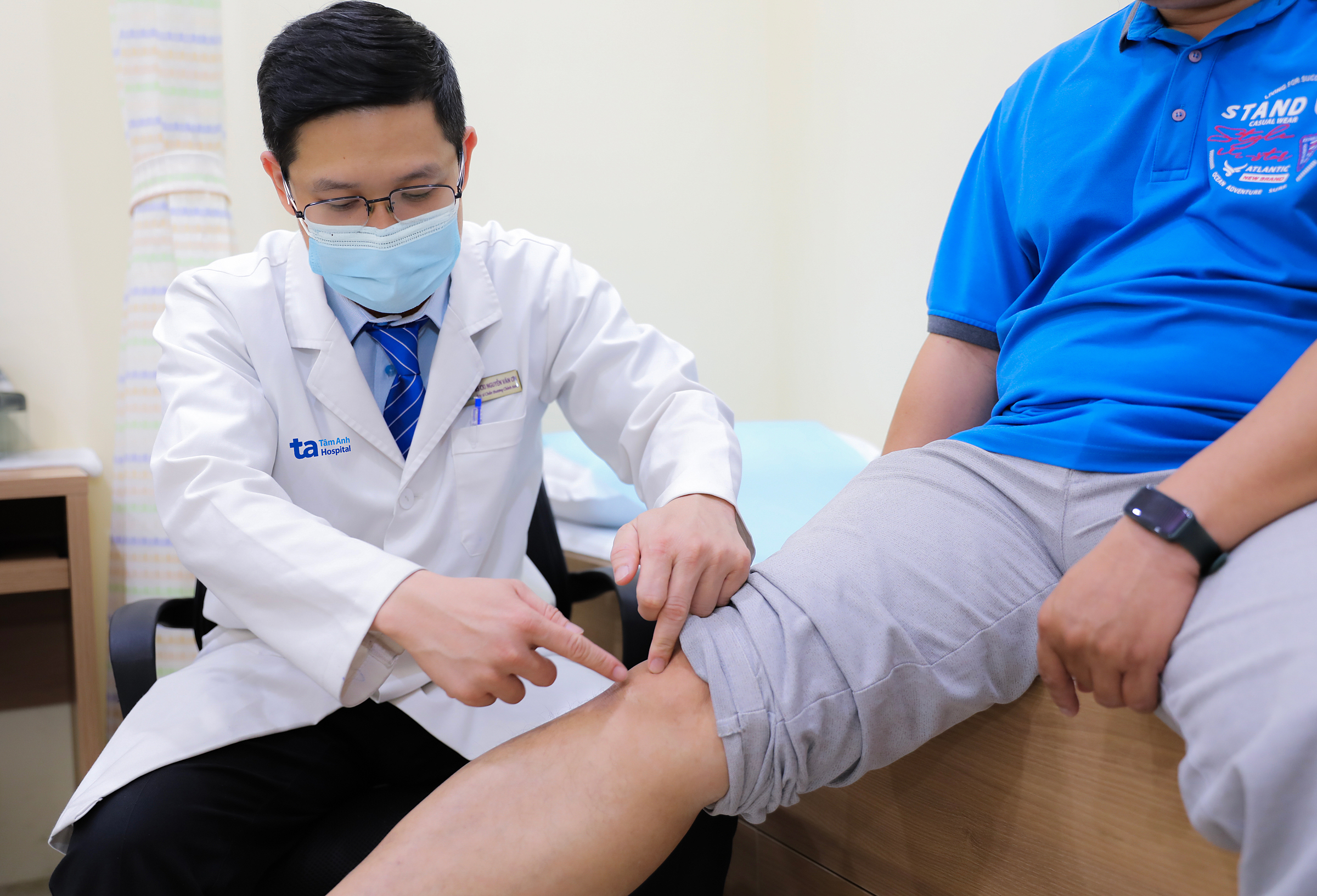Answer:
Knee pain is common among pickleball players. It can be caused by injury, improper playing posture, or underlying medical conditions. Pickleball players often move quickly, change direction, or stop suddenly to keep up with the ball. This increases pressure on the knee joints, causing the surrounding tendons to overwork, potentially leading to injuries in the quadriceps tendon, patellar tendon, hamstring, and others.
The dinking motion in pickleball (crouching to hit the ball softly) can increase pressure on the knees by almost five times, leading to overload, accelerated osteoarthritis, or patellar tendinitis. Meniscus tears or ligament ruptures are also possible causes, occurring when the knee is under heavy load combined with sudden twisting or turning. These can cause pain, locking of the joint, and reduced mobility.
 |
Doctor On examines a patient's knee joint function. Photo: Tam Anh General Clinic, District 7 |
Doctor On examines a patient's knee joint function. Photo: Tam Anh General Clinic, District 7
To prevent knee pain, warm up thoroughly before playing pickleball to prepare your musculoskeletal system, increase blood circulation and flexibility, and reduce the risk of injury. Strengthen your thigh, buttock, and leg muscles to reduce pressure on your knees. Wear appropriate clothing and shoes with good cushioning and grip to absorb shock and maintain balance. Use knee support if necessary.
While knee pain during pickleball can be a minor injury, it can also indicate underlying conditions that require early treatment. Listen to your body and stop playing if you experience pain. If the pain persists or is severe, consult a doctor for timely treatment to avoid complications that could affect your mobility.
Dr. Nguyen Van On
Orthopedic Trauma Unit
Tam Anh General Clinic, District 7
| Readers can submit questions about musculoskeletal diseases here for doctors to answer. |












